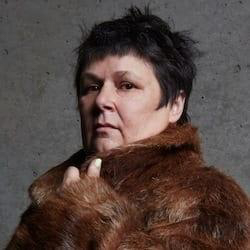
Hidden
For her work, Yvonne Meier has been awarded three New York Foundation for the Arts grants, a grant from the NEA’s American Masters program, a Guggenheim Fellowship, as well as three Bessie Awards.
Artist Bio
Yvonne Meier
New York, NY
Yvonne Meier is originally from Zurich and now lives in New York City. Since 1979, she has built a career in dance, creating a wide array of works, from quiet solos to large group spectacles. Meier is the recipient of three NEA Fellowships (1987, 1988, 1991), three New York Foundation for the Arts Fellowships (1988, 1994, 2006), two NEA Inter-Arts grants (1990, 1992), three Bessie Awards (1993, 2010, 2011), a Lambent Foundation Award, the Dorothea Tanning Award from the Foundation for Contemporary Arts (2010), and a Guggenheim Fellowship (2019). Her works have been performed in leading experimental venues in New York, including the Kitchen, Danspace Project, Performance Space 122, as well as Lincoln Center Out of Doors. Meier has shown her work in theaters and festivals throughout the United States and Europe. As a dancer, performer, and teacher, Meier is known for her skill, deep research, and sharp humor as an improviser.
